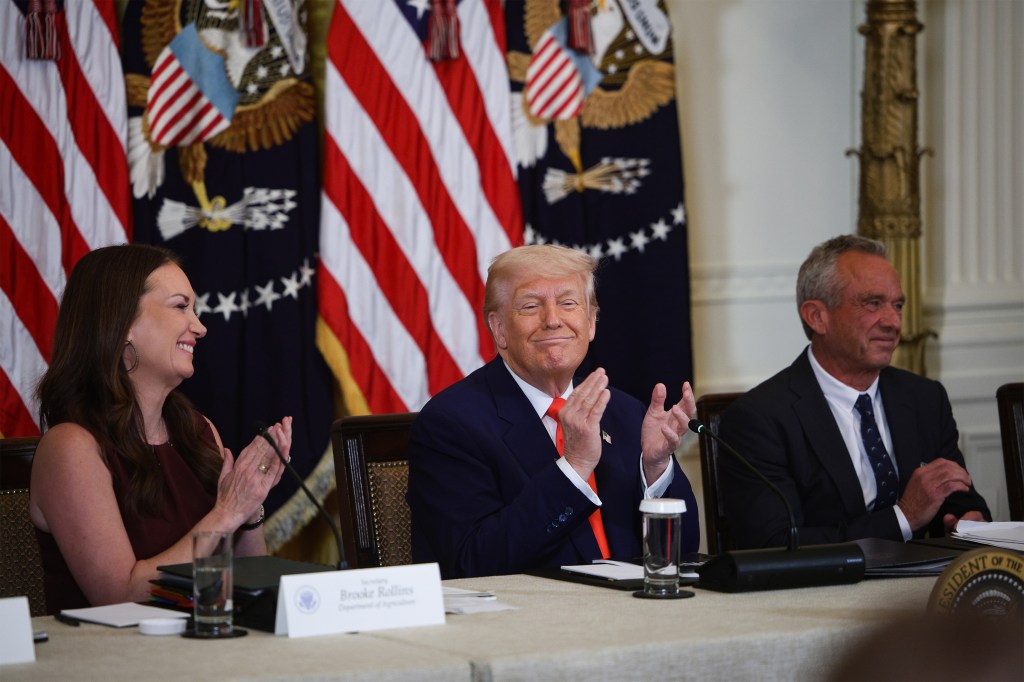The Trump administration has pledged to tackle chronic diseases in the United States aggressively. However, its recent actions, including proposed budget cuts and the elimination of key health programs, suggest a stark contrast between its stated intentions and actual policies. This discrepancy is highlighted in the “Make America Healthy Again” (MAHA) report, presented by President Donald Trump at the White House, which calls for increased research and robust public health initiatives.
Despite these proclamations, the administration has proposed eliminating the National Center for Chronic Disease Prevention and Health Promotion, cutting its $1.4 billion annual funding. This move has raised concerns among scientists and public health advocates who see it as a contradiction to the report’s goals.
Inconsistencies Between Rhetoric and Action
The MAHA report emphasizes the need for more research on chronic diseases and environmental chemicals. Yet, the administration’s cancellation of federal research grants, including those at prestigious institutions like Harvard University, has stifled progress in these areas. The report criticizes industry-funded research as unreliable but simultaneously seeks to cut government funding that could counterbalance such studies.
Alonzo Plough, chief science officer at the Robert Wood Johnson Foundation, remarked, “There are many inconsistencies between rhetoric and action.” The report, a cornerstone of Trump’s health agenda, was issued by a commission including Secretary of Health and Human Services Robert F. Kennedy Jr. However, news organizations have pointed out inaccuracies and potential AI involvement in its creation, which the White House has since revised.
Studies Derailed by Funding Cuts
The MAHA report acknowledges the risks posed by environmental chemicals to children’s health, citing the need for continued studies. However, the administration has cut funding for related research. In 2020, the Environmental Protection Agency (EPA) invited scientists to study children’s exposure to soil and dust chemicals. A significant grant was awarded to researchers at Johns Hopkins University and the University of California-San Francisco, but it was terminated prematurely, halting crucial analyses.
“The objectives of the award are no longer consistent with EPA funding priorities,”
the agency stated in a termination notice.
Similarly, a grant supporting the Center for Early Life Exposures and Neurotoxicity at the University of North Carolina-Chapel Hill was ended early. EPA press secretary Brigit Hirsch noted that future grant administration would differ due to agency reorganization, without addressing specific grant concerns.
Impact on Long-term Research
The Trump administration’s funding cuts have also affected long-term research projects, such as Harvard’s Nurses’ Health Studies, which have tracked participants for decades. These studies provide invaluable data for understanding chronic diseases. However, the abrupt end to NIH funding has jeopardized the continuation of these projects, according to Walter Willett, a professor at Harvard’s T.H. Chan School of Public Health.
“Our ability to do exactly what the administration wants to do is jeopardized,”
said Jorge Chavarro, another Harvard professor.
Senator Patty Murray highlighted the broader impact of these cuts at a Senate Appropriations Committee hearing, noting that the administration has blocked nearly $3 billion in grant funding and terminated thousands of grants, affecting research institutions nationwide.
Budget Proposals and Industry Influence
Following the MAHA report, the administration proposed significant budget cuts across health agencies, including a $17 billion reduction for the NIH. The proposed budget aims to transform bureaucracy while ostensibly making Americans healthier. However, these cuts conflict with the MAHA report’s priorities, such as tracking diabetes in children, which is threatened by the proposed elimination of the National Center for Chronic Disease Prevention and Health Promotion.
The report criticizes the influence of corporate funding on research, yet the reduction in federal funding could increase reliance on industry dollars. Peter Lurie, president of the Center for Science in the Public Interest, warned that industry-funded studies might prioritize favorable outcomes for corporations.
“If you devastate governmental funding by tens of billions of dollars, then the percentage of industry funding dollars will go up,”
said Alonzo Plough.
The Future of Public Health Research
The Trump administration’s approach has raised concerns about scientific independence and transparency. Recent comments by Robert F. Kennedy Jr. about creating government journals and restricting NIH scientists’ publications have sparked fears of censorship. Dariush Mozaffarian of Tufts University cautioned against confining government research to in-house journals, calling it a potential disaster for scientific integrity.
The administration’s actions have prompted calls for greater public understanding of the impact on federal health bureaucracy. As the debate continues, the future of public health research in America remains uncertain, with significant implications for the nation’s ability to address chronic diseases effectively.
 New Fossil Discoveries Unravel the Mysteries of Earth’s “Great Dying”
New Fossil Discoveries Unravel the Mysteries of Earth’s “Great Dying” Understanding Cancer Screening: Key Insights and Recommendations
Understanding Cancer Screening: Key Insights and Recommendations How to Stay Safe During Extreme Summer Heat
How to Stay Safe During Extreme Summer Heat Trump’s Domestic Policy Bill Faces Critical Test in Divided House
Trump’s Domestic Policy Bill Faces Critical Test in Divided House AI Model Revolutionizes Prediction of Sudden Cardiac Arrest Risk
AI Model Revolutionizes Prediction of Sudden Cardiac Arrest Risk